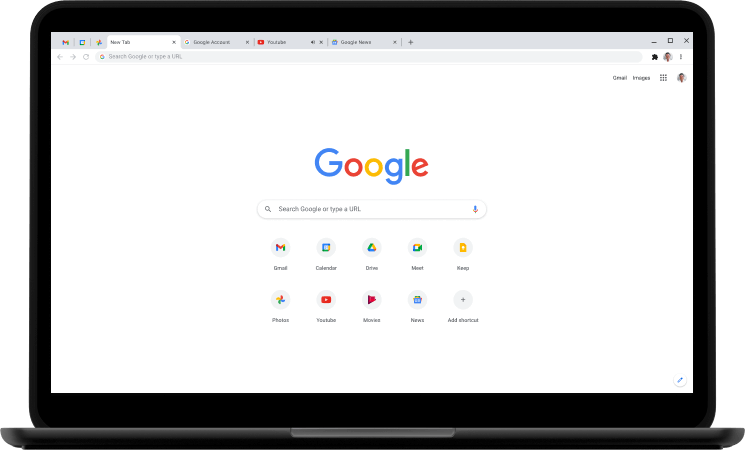Ctrl + g: Jump to the previous match to your Find Bar search: Ctrl + Shift + g: Open Developer Tools: Ctrl + Shift + j or F12: Open the Clear Browsing Data options: Ctrl + Shift + Delete: Open the Chrome Help Center in a new tab: F1: Log in a different user or browse as a Guest: Ctrl + Shift + m: Open a feedback form: Alt + Shift + i: Turn on. Create and edit web-based documents, spreadsheets, and presentations. Store documents online and access them from any computer. Google Chrome is in constant development. Updates are released on an almost monthly basis. This can lead to some issues. Minor bugs and inconveniences occur regularly between updates. Most problems are resolved quickly by a large community of developers.
Google has added a new feature to Google Chrome Canary that makes it easier for users to test new hidden features under development.
When Google creates a new browser feature, it is first tested in Google Chrome Canary and Google Chrome Beta. In many cases, these new features must first be enabled using an 'experiments' configuration flag before they are accessible.
To access these experiment flags, users can go to chrome://flags in the address bar, which will open an 'Experiments' page with all the hidden Chrome features that can be enabled.
.
However, the 'Experiments' page contains many options that are not for user-facing features but instead internal tests conducted by the Chrome development team.
Due to this, it can get confusing to find new user-facing features that Google is actively developing.
Chrome Labs makes it easier to find new features
To make it easier for Google Chrome users to find new features that Google wants them to test and provide feedback on, Google has introduced this week a feature called 'Chrome Labs.'
When enabled, Chrome Labs will display a small beaker () on the toolbar, that when clicked, will display a menu of current experiments, or features, that are being actively developed.
The hidden features currently promoted by Chrome Labs are 'Reading List', 'Tab Scrolling', and 'Tab Search.'
Users can enable these features by clicking on the 'Default' button and changing it to 'Enabled.' Once you do so, Chrome will prompt you to restart the browser to enable the feature.
Google Chrome's Head of Design Alex Ainslie announced the new Chrome Labs feature on Twitter this week and said it is available in Google Canary and coming soon to Chrome Dev and Beta.
We hope to gather more feedback about @googlechrome updates as they're in development. If you're using Canary today (and soon Dev and Beta) you'll notice a little beaker on the toolbar that makes it easier to try out new stuff and share suggestions about how it should evolve. pic.twitter.com/doPLzJbnRW Android os online.
— Alex Ainslie (@alexainslie) March 5, 2021Google Chrome
In our tests, the feature has not gone live in Google Chrome Canary as of yet, so it may still be rolling out to users.
For those who want to try it immediately, you can enable the 'Chrome Labs' feature now in Chrome Canary and Chrome Beta by entering chrome://flags#chrome-labs in the address bar and pressing enter.
When Chrome Labs appears, change it to Enabled and restart the browser for the feature to become active.

Related Articles:
Google has historically released new versions of Chrome every six weeks with smaller patches rolled out in between. In a big change, Google Chrome is moving to a four-week update cycle this year.
From the beginning, Google has taken an aggressive stance on updating its browser in the background. Chrome is architected that way to ensure security, with new versions downloading silently and users getting frequently prompted to install by restarting.
Major versions (i.e. 88 -> 89) with new features are released every six weeks, while smaller security-focused updates come biweekly. Later this year, Google plans to release a 'milestone' every four weeks so that new functionality on Mac, Windows, Linux, Android, iOS, and Chrome OS can come on a faster monthly basis.
As we have improved our testing and release processes for Chrome, and deployed biweekly security updates to improve our patch gap, it became clear that we could shorten our release cycle and deliver new features more quickly.
This four-week cycle is expected to let Google 'more consistently move the majority of users to the latest stable release within 2 weeks.'
As part of this change, 'enterprise administrators and Chromium embedders who need additional time to manage updates' will get an 'Extended Stable' milestone that's on a longer eight-week cycle. Regular, non-managed Chrome users won't be given access to this channel.
Google Chromecast
Security updates on Extended Stable will be released every two weeks to fix important issues, but those updates won't contain new features or all security fixes that the 4-week option will receive.
Chrome OS, which updates a week after desktop and mobile, is also getting support for multiple stable releases. More details are set to arrive in the coming months for Chromebook administrators with managed devices.
Google will implement this new release cycle with Chrome 94 in the third quarter of 2021. The company is currently targeting September 21st for that update, with the last six-week version being Chrome 93 on August 31st. A preliminary schedule is available with new documentation, and the team is taking feedback from Chromium contributors at branches@chromium.org.
Google Chrome Setup
More about Google Chrome:
Google Chrome Store
FTC: We use income earning auto affiliate links.More.
